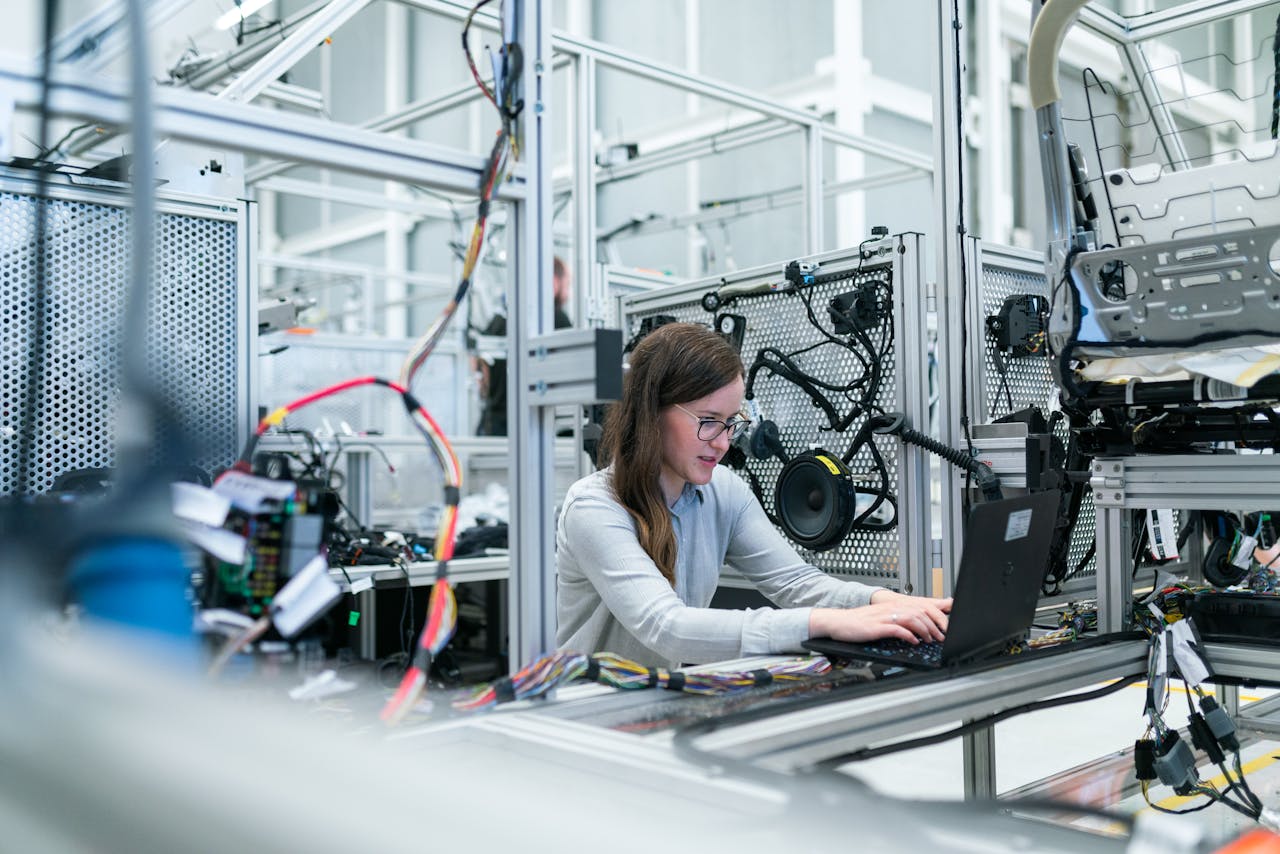In modern workspaces, particularly those merging industrial operations with cutting-edge technology, the importance of efficient storage systems cannot be overstated. High-tech environments often require precise organization to maintain safety and productivity, especially when storing heavy-duty industrial gear. Without proper storage solutions, your workspace can quickly descend into chaos, leading to inefficiencies, safety hazards, and even damage to expensive equipment.

In this guide, we’ll explore smart strategies for safely storing industrial gear in high-tech environments, helping you move from chaos to control.
1. Invest in Heavy-Duty Shelving Solutions
The cornerstone of safe storage for industrial gear is selecting the right shelving system. Heavy-duty shelving is designed to handle substantial loads, making it ideal for industrial tools, machinery, and IT hardware that might otherwise be too heavy for standard shelving. These solutions provide the strength and stability needed to ensure your equipment is secure and your workspace stays organized.
Key considerations when choosing shelving:
- Weight capacity: Always select shelving that can support the total weight of your gear without risking structural integrity.
- Durability: Look for materials like steel that offer long-term durability, even in environments with high wear and tear.
- Customisation: Adjustable shelving units can adapt as your storage needs evolve, offering flexibility for different-sized equipment.
In high-tech spaces where precision and performance matter, heavy-duty shelving is essential for maintaining both safety and order.
2. Integrate Smart Storage Technology
As more industries adopt smart technology, incorporating digital tools into your storage system can take organization and safety to the next level. Smart storage solutions, such as inventory management software or RFID tagging, allow you to track the location and condition of your industrial gear in real time. This reduces the risk of misplaced or damaged equipment and ensures that everything is stored efficiently.
Benefits of smart storage:
- Real-time tracking: Know exactly where your tools and machinery are at all times.
- Prevent overloading: Automated systems can alert you if storage units are overloaded, preventing potential safety hazards.
- Maintenance monitoring: Some smart systems can track when equipment is due for maintenance, ensuring that all gear is in optimal working condition.
By integrating smart technology into your storage strategy, you streamline the management of industrial equipment and enhance the overall safety of your workspace.
3. Properly Distribute Weight for Stability
One of the most critical aspects of safely storing heavy equipment is ensuring proper weight distribution. Poorly balanced loads on shelving units or storage platforms can cause the equipment to shift, tip over, or collapse, creating dangerous situations in any workspace. This is especially important in high-tech environments where fragile devices like servers or control systems are nearby.
Best practices for weight distribution:
- Heaviest items on the bottom: Store heavy machinery or tools on the lowest shelves to provide stability and prevent the shelving unit from becoming top-heavy.
- Lighter items on higher shelves: Use higher shelves for smaller or lighter gear that is easier to access and doesn’t compromise the overall balance of the storage system.
- Spread the load evenly: Avoid concentrating weight in one area of the shelf. Instead, distribute it evenly across the surface to maintain stability.
Taking the time to ensure balanced, stable storage will protect both your industrial equipment and the integrity of your high-tech workspace.
4. Use Lifting Equipment to Avoid Injuries
In a high-tech environment, safety is paramount, especially when dealing with heavy equipment. Manually lifting or moving large, industrial gear can lead to injuries, equipment damage, and disrupted workflow. Instead, invest in proper lifting tools like forklifts, hoists, or cranes to handle heavy items safely and efficiently.
Lifting equipment tips:
- Train staff: Ensure your team is trained to use lifting tools properly to avoid accidents.
- Inspect tools regularly: Regularly check lifting equipment for wear and tear to maintain safety.
- Match the tool to the task: Use the appropriate lifting equipment based on the size and weight of the machinery you’re handling.
Implementing the correct lifting equipment can protect your workforce and prevent damage to the gear itself, ensuring a safer and more controlled environment.
5. Secure Your Equipment to Prevent Shifting
High-tech workspaces often involve movement, whether from workers, equipment, or vibrations from machinery. In such settings, it’s crucial to ensure that heavy gear doesn’t shift or move while in storage, which could lead to accidents or damage.
How to secure heavy gear:
- Use industrial straps or tie-downs: Secure large items to shelving units or storage platforms to prevent movement.
- Install stabilizers or brackets: Anchor shelving units to the floor or wall to ensure stability, especially in environments with frequent movement or vibrations.
- Lock items with wheels: For mobile equipment, make sure wheels are locked in place to prevent accidental rolling.
Securing your equipment ensures that no matter how active your workspace is, your heavy gear remains safely stored.

6. Optimize Floor Space and Maintain Clear Aisles
In any workspace—particularly those merging industrial and tech operations—it’s essential to keep your storage areas organized and free of obstructions. Cluttered spaces can lead to tripping hazards, equipment damage, and difficulty accessing stored items. Maintaining clear aisles and optimizing floor space is a key factor in creating a safe and efficient storage environment.
Tips for optimizing space:
- Plan your layout: Arrange shelving units and storage racks to maximize floor space while ensuring easy access to all items.
- Label everything: Clearly label shelves and aisles to ensure quick and accurate access to the equipment or tools you need.
- Use vertical storage: Make the most of your vertical space by installing taller shelving units, which free up valuable floor space for easier movement.
Optimizing your workspace with clear paths and efficient storage systems ensures that both your team and your equipment can operate smoothly.
7. Conduct Regular Inspections
Even the best storage systems require regular maintenance and inspections to ensure long-term safety and efficiency. Conducting routine inspections of your shelving, storage units, and lifting equipment will help you identify potential issues before they become major problems.
Inspection checklist:
- Check for signs of wear and tear: Look for rust, bent shelves, or weakened materials.
- Test equipment stability: Ensure that all shelving units are secure and stable, especially those holding heavy machinery.
- Examine weight limits: Make sure your storage units aren’t overloaded, as this can compromise safety.
Proactively maintaining your storage system will help prevent accidents and ensure your workspace remains efficient and organized.
Summary
In a high-tech environment, safety and organization are essential for success. By investing in durable, heavy-duty shelving solutions and following smart storage strategies, you can effectively manage industrial gear while maintaining a safe, streamlined workspace. From weight distribution and lifting equipment to smart storage technology, these practices will help you bring order to even the most chaotic of spaces, ensuring that your industrial equipment is stored safely and efficiently.